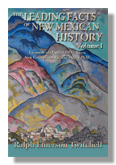 THE LEADING FACTS OF NEW MEXICAN HISTORY, VOL I
THE LEADING FACTS OF NEW MEXICAN HISTORY, VOL IFacsimile of Original 1911 Edition
By Ralph Emerson Twitchell
Voted one of the 100 Best New Mexico Books.
New Foreword by Richard Melzer, Ph.D. Order from Sunstone: (800) 243-5644 Historians have long admired Ralph Emerson Twitchell’s The Leading Facts of New Mexican History, considered the first major history of the state. Put succinctly by former State Historian Robert J. Tórrez, Twitchell’s work (of which this is one of the first two volumes Sunstone Press is reprinting in its Southwest Heritage Series) has “become the standard by which all subsequent books on New Mexico history are measured.” As Twitchell wrote in the preface of his first volume, his goal in writing The Leading Facts was to respond to the “pressing need” for a history of New Mexico with a commitment to “accuracy of statement, simplicity of style, and impartiality of treatment.” RALPH EMERSON TWITCHELL was born in Ann Arbor, Michigan, on November 29, 1859. Arriving in New Mexico when he was twenty-three, he immediately became involved in political and civic activities. In 1885 he helped organize a new territorial militia in Santa Fe and saw active duty in western New Mexico. Later appointed judge advocate of the Territorial Militia, he attained the rank of colonel, a title he was proud to use for the rest of his life. By 1893 he was elected the mayor of Santa Fe and, thereafter, district attorney of Santa Fe County. Twitchell probably promoted New Mexico as much as any single New Mexican of his generation. An avid supporter of New Mexico statehood, he argued the territory’s case for elevated political status, celebrated its final victory in 1912, and even designed New Mexico’s first state flag in 1915. Just as Twitchell’s first edition in 1911 helped celebrate New Mexico’s entry into statehood in 1912, the newest edition serves as a tribute to the state’s centennial celebration of 2012. In the apt words of an editorial in the Santa Fe New Mexican at the time of Twitchell’s death in 1925: “As press agent for the best things of New Mexico, her traditions, history, beauty, glamour, scenery, archaeology, and material resources, he was indefatigable and efficient.” Sample Chapter
Softcover:
Website: http://books.google.com/books?id=e4jgfIqd7gIC
Hardcover:
6 X 9
ISBN: 978-0-86534-584-3
716 pp.,$65.00
6 X 9
ISBN: 978-0-86534-565-2
716 pp.,$45.00
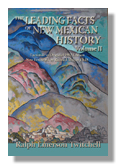 THE LEADING FACTS OF NEW MEXICAN HISTORY, VOL. II
THE LEADING FACTS OF NEW MEXICAN HISTORY, VOL. II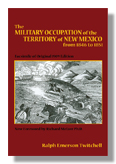 THE MILITARY OCCUPATION OF THE TERRITORY OF NEW MEXICO, 1846-1851
THE MILITARY OCCUPATION OF THE TERRITORY OF NEW MEXICO, 1846-1851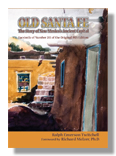 OLD SANTA FE
OLD SANTA FE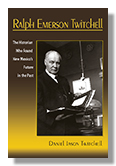 RALPH EMERSON TWITCHELL
RALPH EMERSON TWITCHELL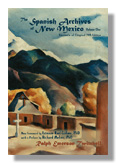 THE SPANISH ARCHIVES OF NEW MEXICO, VOLUME ONE
THE SPANISH ARCHIVES OF NEW MEXICO, VOLUME ONE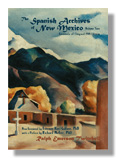 THE SPANISH ARCHIVES OF NEW MEXICO, VOLUME TWO
THE SPANISH ARCHIVES OF NEW MEXICO, VOLUME TWO